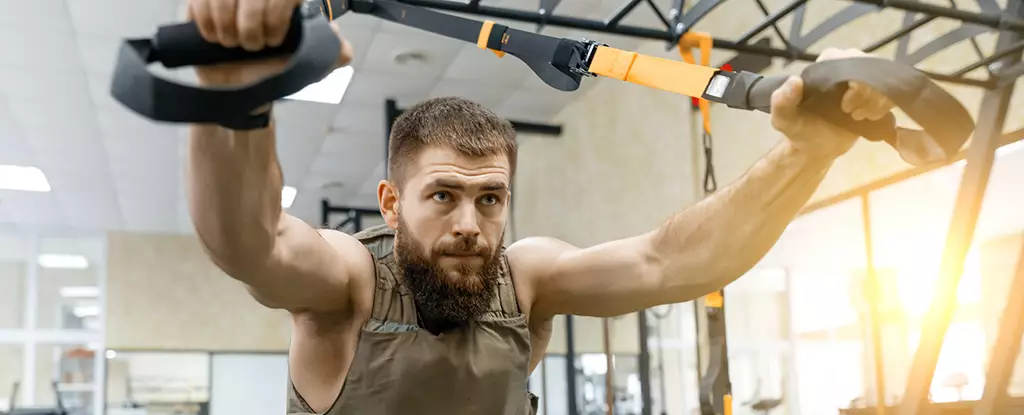Recent trends in fitness circles have revived the use of weighted vests as a tool for enhancing exercise efficacy. While the concept of training with additional weight is not new—the practice dates back centuries with soldiers undertaking lengthy marches bearing heavy packs—the evolution of the weighted vest has made it more accessible and versatile for today’s fitness enthusiasts. Unlike their cumbersome predecessors, modern weighted vests offer a range of weights, increased comfort, and the ability to adjust load easily. But do they truly deliver on the benefits they claim, or is this just another fad endorsed by influencers?
Several studies have looked into how wearing weighted vests during workouts affects various aspects of fitness and health. One pioneering study from 1993 tracked 36 elderly participants who wore weighted vests in weekly exercise classes over a 20-week period. The findings indicated improvements not only in physical function and pain levels but also significant enhancements in bone health. Since then, a multitude of other research papers have been published corroborating these findings, suggesting that exercise intensity increases in a measurable way when using a weighted vest. For example, it has been shown that wearing 10% of one’s body weight can boost oxygen consumption, heart rate, and energy expenditure—all indicators of increased physiological stress.
However, despite these benefits, it seems that the optimal additional weight for noticeable differences in performance lies within a narrow range. Research indicates that wearing a vest that adds approximately 5% of body weight does not significantly alter the body’s biomechanical performance while walking or running, which raises questions about whether lighter weights offer any tangible benefits at all.
While the physiological demands of using a weighted vest may increase, safety must remain a primary concern. Initial studies on biomechanical responses during treadmill running found that, even with added weights ranging from 1% to 10%, no adverse effects on gait motion were reported. Importantly, no clinical studies to date indicate a direct relationship between wearing weighted vests and an increase in exercise-related injuries, although research has pointed to a 25% incidence of back pain among obese individuals using these vests for weight loss.
This emphasizes that body mechanics can be influenced by factors such as an individual’s fitness level and inherent physical conditions. As with any exercise program involving resistance, improper use or excessive weight can result in injury. Hence, a prudent approach of beginning with lighter weights—and always prioritizing proper form—should be adopted, especially for beginners.
Fat Loss, Muscle Retention, and Other Claims
The chorus of claims surrounding the weight loss potential of weighted vests paints a promising picture; however, the data tends to be murky and inconsistent. Previous studies have suggested that wearing a weighted vest during treadmill walking could result in greater fat loss and muscle retention among postmenopausal women, but these conclusions do not uniformly apply across demographics. Subsequent research only partially supports these findings, revealing that constant daily use of a vest among older obese adults did not conclusively lead to greater fat loss, raising questions about the practicality of these claims for broader audiences.
Additionally, while some studies indicate potential advantages for bone health when engaging in weight-bearing exercises with a vest, not all investigations have affirmed these benefits. A 2003 study provided insight into improved bone density in elderly women, while a later study in 2012 found no significant difference in bone metabolism when comparing women with and without vests.
Before incorporating weighted vests into a fitness routine, new exercisers should focus on establishing a solid foundation through basic exercises that utilize body weight alone. This simpler approach allows individuals to develop strength, aerobic fitness, and overall resilience before adding extra resistance. Once comfortable, exercisers might then carefully introduce the vest for added intensity and diversity in workouts. It is advisable to limit the added weight to 10% of body weight, particularly in high-impact exercises such as running or jogging, and to gradually increase the load.
While weighted vests have their merits, more conventional forms of resistance training using free weights may offer a more straightforward, effective alternative without the added complications associated with vests. Ultimately, while the strategic use of weighted vests can augment certain workouts, practitioners should balance their use against risks and the wide array of available training tools designed for muscle conditioning and cardiovascular improvement.
Weighted vests offer a unique means of potentially enhancing workout intensity and benefits, particularly for improving bone health. However, their advantages come with caveats, particularly regarding safety and efficacy. Fitness practitioners should consider individual circumstances, ensuring they weigh the pros and cons intelligently. Whether to adopt this tool largely depends on personal fitness goals, existing physical condition, and a commitment to informed training practices. As always, starting slowly and focusing on technique is key to reaping rewards without falling prey to injury.

